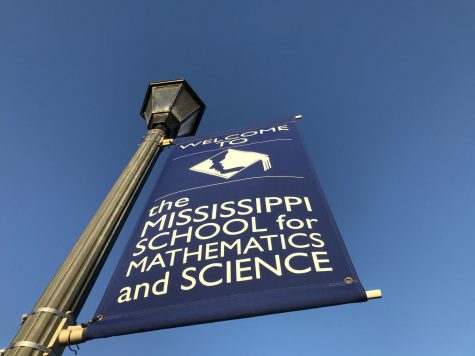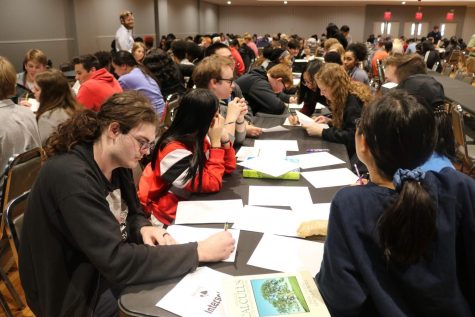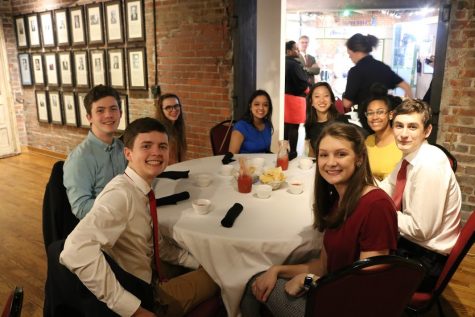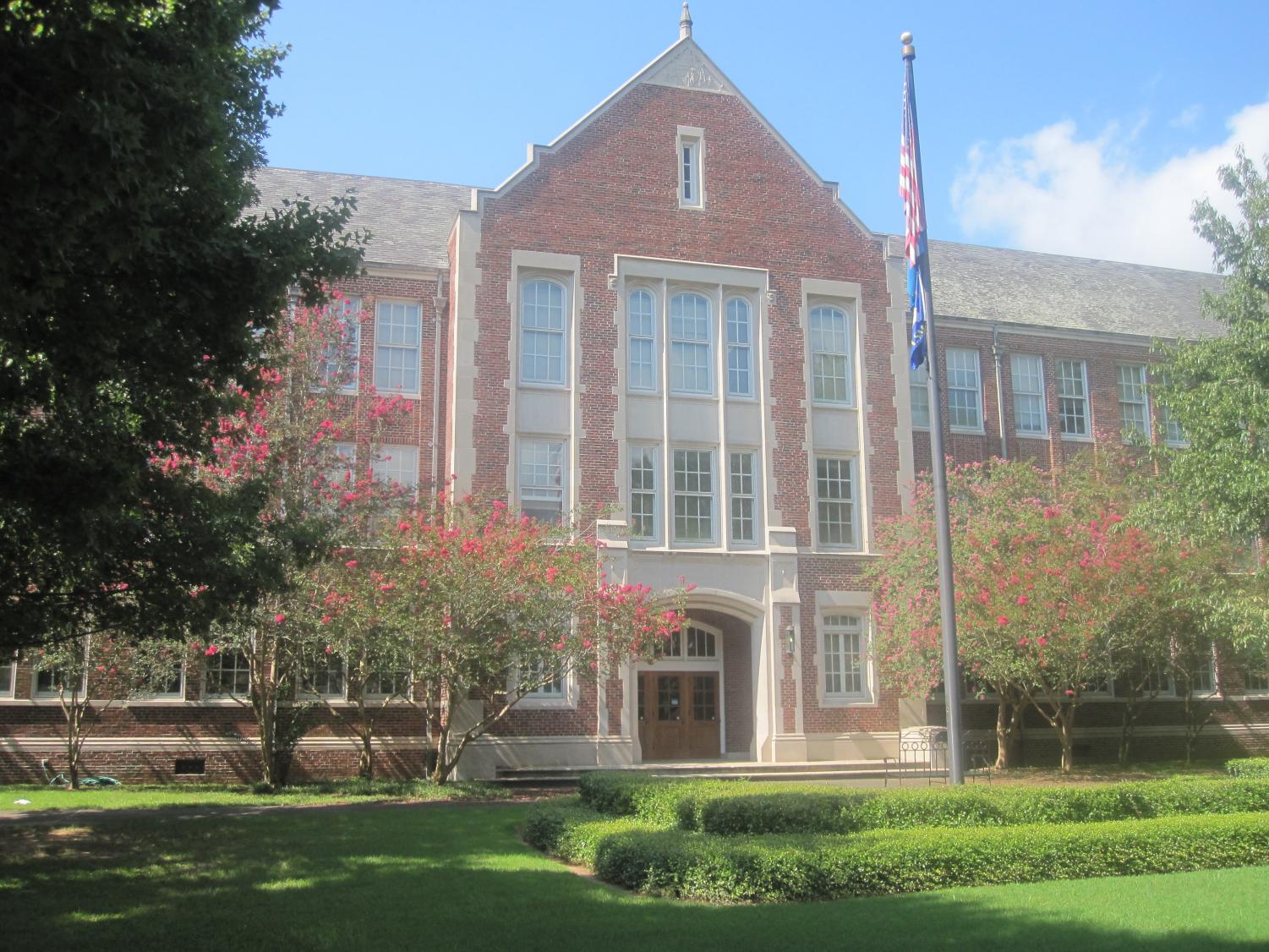A Connection Regained: MSMS and LSMSA
A Bridge Connecting Two Different Places With Similar Cultures
May 6, 2019
In a state like Mississippi, or any southern state for that matter, where convention and tradition often supersede change, it is important to have a safe haven for those who are different. It should be a place where they are free to express themselves in culture, sexuality, religion, opinions, race and identity.
What if I told you there is a chain of these “safe havens” in several states across America? Well, there are. That chain is called the National Consortium for Secondary STEM Schools, basically places where “nerds” of all kinds can unite and escape from their home schools where they were once outliers.
Often referred to as sister-schools, the siblings that will be discussed in this article, The Mississippi School for Mathematics and Science (MSMS) and The Louisiana School for Math, Science and the Arts (LSMSA), are two of a kind yet one and the same.
LSMSA is a residential high school for academically and artistically gifted and talented students located in Natchitoches, Louisiana, on the campus of Northwestern State University. The school is in place to cater to students who are gifted in academics and/or the arts.
Similarly, MSMS is a residential high school located in Columbus, Mississippi, on the campus of the Mississippi University for Women. However, as it is evident in the name, MSMS is specifically for academically gifted and talented students with particularly strong interest in math and science. Though it has small prominent aspects exemplifying the arts, it does not specifically cater to artistically gifted students.
Students at both schools have decided to make the difficult decision of living away from the comfort of their homes for various reasons. The most common reason among both student populations was to quench a thirst for more in life. Their desire for more opportunities has placed them in these prestigious yet challenging residential high schools.
Admissions Process

MSMS rids of math requirements for graduation.
To have such advanced curricula, both schools need the best students that the state offers. In order to accomplish that, each school has its own competitive admissions process. Only sophomores can apply to MSMS for their junior year. However, freshmen, sophomores and even certain juniors can apply to LSMSA for their sophomore, junior or senior year.
The MSMS application requires students to write two essays (500-750 words) and a personal narrative. It also requires them to provide four recommendation letters (math teacher, science teacher, additional teacher and counselor), a transcript, an ACT score and a resume of some sort. There is also an optional work sample where students can show and explain a math or science project/experiment. After students make it past the first round, they come to the campus for interviews and an additional on-site essay.
The LSMSA application has a series of approximately ten short essays and three letters of recommendation (math teacher, English teacher and counselor), and students have to submit an ACT/SAT score and an updated transcript. Interviews are also required for certain applicants at the discretion of the admissions office.
Academics

In the midst of all of the diverse cultures at both institutions, the most evident is the love of learning and the exploration of new ideas. The purpose of the schools is to give their students more academic rigor while submerging them in an academically fast-paced environment. This can only be accomplished with the best of the best faculty. Both MSMS and LSMSA have faculty ranked top three in the nation (LSMSA: #3; MSMS: #1), solidifying the quality of the education that both schools offer.
Unlike most other public schools, MSMS and LSMSA do not rank their students or choose a valedictorian of the graduating class. Because the schools’ populations are entirely made of scholars who were once near/at the top of their class at their old school, they choose to acknowledge each student’s individual gifts rather than compare each of them based on their varying academic performances. Neither school weights its students’ Grade Point Averages. The goal is to reach each student’s personal needs rather than have them compete with one another.
Both schools offer wonderful research, mentorship and dual enrollment opportunities. MSMS students job shadow professionals of their choice around the Columbus area, and they can do research on a variety of topics at Mississippi State University. Students can also take dual enrollment courses, receiving hours from the Mississippi University for Women. LSMSA has an agreement with 11 colleges (10 in Louisiana and one in Georgia) that allows students to earn college credit from certain classes. Students can also request to designate certain classes as dual enrollment classes with Northwestern State University. These classes are taken at LSMSA with LSMSA faculty. NSU will also grant an Associate of General Studies upon graduation from LSMSA to those students who have completed enough dual enrollment credits. This is done through a Memorandum of Understanding with the university.
Since all students are there for the same amount of time, MSMS has a system called the MSMS 13 where students have to earn 13 credits from various courses that are required through the MSMS curriculum. This is formed by three science credits (biology, chemistry and physics), Foundations of Higher Mathematics, Trigonometry, Calculus I, AP Statistics I, two full English credits, one full swing credit (in math or science), two full credits of the same foreign language, US History, Economics, Government and additional electives of the student’s choice.
On the other hand, all LSMSA students are not enrolled for the same amount of time, so instead of having a set number of credits that need to be completed while students are enrolled in LSMSA, the requirement for each student is to take a minimum of six courses each semester. Though there are certain specific requirements, LSMSA gives students a bit more liberty into which path they take to achieve those minimum 26 credits to credits for graduation.
Nevertheless, both MSMS and LSMSA offer a broad variety of classes to cater to students of all kinds. Though the names can be quite deceiving, both schools have very strong humanities departments along with the superb mathematics and science departments.
However, the evident distinguishing factor between the two schools is the ‘A’ in LSMSA: art. The arts program offers a variety of courses in theatre, visual art, dance, music, creative writing and media.
“Our art program is very developed and very high-level,” explained LSMSA junior Jack Granger. “We have a whole two-story building dedicated to it, with the first floor being home to the visual arts program and the second floor being home to the musical arts program. We have produced many prodigal pianists, which is one of our music program’s main focuses. Our performance arts are situated in the CPT, and we have a black box and a recital hall. We offer many acting courses and put on many performances over the course of the school year that are free to attend. We also have a top-notch dance studio situated on the second floor of the HSB. We have many dance classes from beginning to professional, and we offer many varieties of classes from hip-hop to contemporary to ballet.”
Though the arts program may be more appropriately be compared with the Mississippi School of the Arts, MSMS has a few opportunities for students interested in the arts as well. It offers a variety of instrumental performance courses, as a large percentage of the student body plays at least one instrument. There is also a drama club and the dramatic performance class. However, the most well-known display of the arts at MSMS would be Tales from the Crypt and the Eighth of May Emancipation Celebration, both research/service/performance programs held in cemeteries.
Both MSMS and LSMSA provide wonderful academic opportunities for their students. Since they both believe in developing individuals, it is safe to say that learning goes beyond the classroom.
Residential Life
The residential aspect of both schools is the factor that makes the experiences more college-like. 100% of students that attend both schools stay on campus. This not only gives students a gist of the college experience, but it also assists in achieving the goal of building a community of scholars by immersing the students in an environment full of other scholars, promoting collaboration. The residential staffs aim to ensure that the experiences in the dorms are a safe and somewhat homelike environment. MSMS students live in Goen (girls) and Frazer (boys) Hall, and L.SMSA students live in Caddo (girls) and Prudhomme (boys) Hall.
Both schools have a privilege plan system, handing students slight liberty from the restricted boundaries of the rules. At MSMS, the plans are (ranked from least to greatest) junior plan, standard plan, extended plan, premium plan and O-plan (seniors only). MSMS students have a designated time where they are required to do homework, study or go to tutorials from 7 p.m.-9 p.m. Higher privilege plans allow students to get certain days off for study hours, sign out for longer periods of time and gives them more general errand sign-outs. All students still have a curfew 10:25 p.m. on weekdays and 12 a.m. on weekends (except for juniors on junior plan: 11 p.m.).
LSMSA’s privilege system are in levels: Level One, Level Two, Level Three and Level Four. Students are assigned their plan based on their GPA from the previous grading period and their discipline record. Students on Level Four get in-town driving/riding privileges, as do seniors on Level Three to a lesser extent. All students have a curfew of 9 p.m. on weekdays (except for seniors with levels three and four: 10 p.m.). Unlike MSMS, students at LSMSA do not have study hours. Students on supervised study, however, are required to complete a certain number of supervised study hours with a faculty or staff member each week.
Since there is a shortage of custodial faculty, students at both schools are required to do “work service.” Each student gets assigned a task at the beginning of the school year and has to carry it out for the remainder. Though most students get cleaning assignments, teachers can choose students of their choice (preferably seniors) for assistance.
Student Life

Students at both schools spend the bulk of their “free time” pursuing their passions in the many clubs and organizations that each school offers: LSMSA and MSMS. Of those extracurricular activities, the most prestigious honor is receiving the title of Ambassador (LSMSA)/Emissary (MSMS). At MSMS, juniors apply to be emissary for their senior year, but LSMSA students can apply to be ambassador after their first semester.
Outside of the academic realm, MSMS and LSMSA students find much joy in escaping from the day-to-day stress-builders and going out for a day in the town.
“Students like to walk to downtown Natchitoches to eat and shop at some of the local restaurants and stores. We also like to walk to various chain restaurants in another part of town as well. We also have a bonfire behind the male residence hall almost every weekend. Students also like to play board games in the residence hall lobbies. Students here also love to walk to Goodwill to shop,” said LSMSA senior and editor-in-chief of The Renaissance Zachary Schleter.
MSMS students typically make use of the mall/movie shuttle that comes on the weekend, or they just simply go out to eat with a group of friends.
An Insight
Two instructors who are apart of the MSMS family, Dr. Thomas Easterling and Dr. Philip Benge, were once apart of the LSMSA family. At both schools, regardless of the major differences, share a diverse culture in many different aspects.
That is essentially the goal of both schools. They are meant to be a melting pot for students of all kinds. Though they are two small town schools, they stand as a temporary home for students with big, bright futures.

Cameron Thomas • May 28, 2019 at 8:51 pm
@Aliyah Zion
Thank you for all of the support! I truly appreciate it. I’m sure we will do our best to ensure The Vision is steadily improving in the upcoming school year. 🙂
Aliyah Zion • May 27, 2019 at 12:06 am
This was a very enlightening article! you have honestly been my favorite writer for The Vision this year. Your articles have been thoroughly entertaining and insightful, and I’m looking forward to more quality work and whatever The Vision has in store for next year.